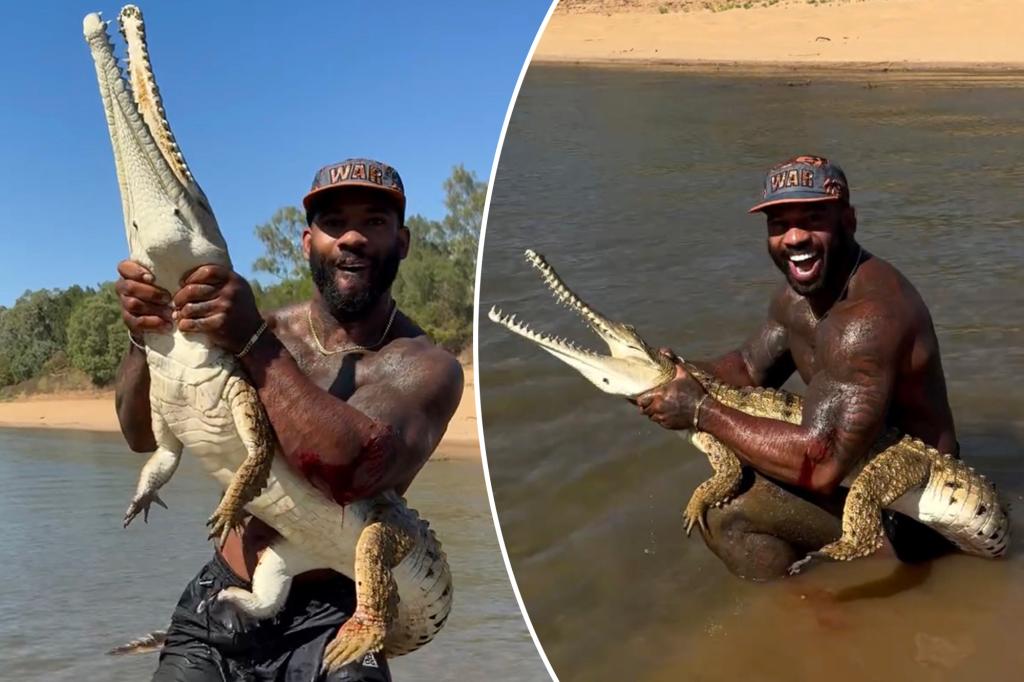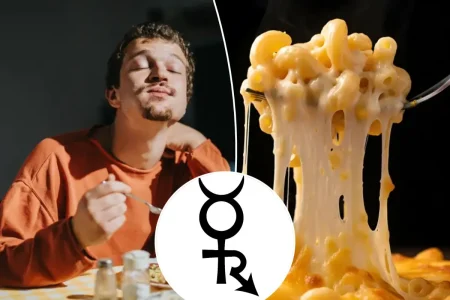Social Media Stunts with Wildlife Spark Outrage and Raise Ethical Questions
In a recent incident that has ignited fierce debate across social media platforms, wildlife influencer Mike Holston, known to his 23 million followers as “The Real Tarzann,” is facing serious backlash after posting a video of himself wrestling a freshwater crocodile in Queensland, Australia. The footage, which quickly amassed over 800,000 views, shows Holston leaping from a boat in shallow waters near Lockhart River in Cape York, chasing down a retreating crocodile, and forcibly wrestling the animal to shore while a cameraman captures the entire confrontation. During the struggle, Holston sustains a bleeding wound on his arm but appears jubilant about the encounter, exclaiming, “This is what dreams are made of. Ever since I was a kid, I wanted to come to Australia and just look at crocodiles, catch them between my hands, and see them up close.” The video ends with the crocodile audibly groaning while Holston celebrates his achievement, seemingly oblivious to the distress he has caused the animal.
The public response to Holston’s actions has been sharply divided. While some followers expressed admiration for what they perceived as bravery, a significant portion of viewers condemned the stunt as unnecessary cruelty and harassment of wildlife. Comments flooded in criticizing the influencer for disturbing an animal that was peacefully existing in its natural habitat. “Why do that to them though? I don’t get it. Leave them alone. It’s kind of sad you’re coming up into their safe space it’s not right,” wrote one commenter, capturing the sentiment of many who viewed the interaction as exploitative rather than educational. The Community Representation of Crocodiles (CROC), a Queensland animal welfare organization, publicly denounced the video, stating: “This behavior is distressing for the animal and illegal under the Nature Conservation Act. When it’s promoted on large social media platforms — without permits or authority to handle wildlife — it sets a dangerous precedent.” The organization noted that despite numerous reports to authorities from concerned viewers, the penalties for such behavior may be insufficient compared to the monetary gain influencers receive from viral content.
The controversy extends beyond public opinion into legal territory, with Queensland’s Department of Environment confirming an ongoing investigation into the incident. A department spokesperson emphasized the seriousness of the situation, noting, “It is a significant offence to interfere with freshwater crocodiles in Queensland, not to mention extremely dangerous.” The potential consequences for Holston’s actions are substantial, as Queensland law stipulates that deliberately disturbing or handling crocodiles without proper authorization can result in fines of approximately $18,000. This legal framework exists not only to protect wildlife from harassment but also to prevent dangerous human-wildlife interactions that could lead to injury or death for either party. Despite these established protections, influencers like Holston continue to push boundaries in search of content that will generate views, engagement, and ultimately, revenue.
For Holston, this incident is merely the latest in a pattern of controversial wildlife interactions documented across his social media platforms. His content regularly features close encounters with dangerous animals, including giant snakes, birds of prey, and even a Sumatran saltwater crocodile. This consistent approach to wildlife content raises important questions about the ethics of using animals for entertainment and profit in the digital age. While Holston and similar content creators often frame their interactions as educational or born from a genuine passion for wildlife, critics argue that these justifications ring hollow when the primary purpose appears to be generating shocking, shareable content. The commodification of wildlife encounters transforms animals from beings deserving respect and space into props for human entertainment, potentially normalizing disturbance of wildlife among impressionable audiences who may attempt to replicate such behaviors without understanding the risks or ethical implications.
The problem of exploitative wildlife content extends far beyond this single incident, representing a troubling trend across social media platforms. In another recent case highlighting this issue, a Spanish tourist faced widespread condemnation after footage emerged of him pouring beer down an elephant’s trunk at a wildlife sanctuary in Kenya. This incident, reported by the BBC, prompted immediate investigations by the Kenya Wildlife Service and drew sharp criticism from the Ol Jogi Conservancy, which labeled the behavior “unacceptable, dangerous, and completely against our values.” These cases illustrate how social media has created new pressures on wildlife, with animals increasingly subjected to harassment and dangerous situations as humans seek novel content to share online. The viral nature of such videos can inadvertently incentivize similar behavior from others seeking attention or validation, creating a cycle that puts both animals and humans at risk.
As these controversies continue to unfold, they highlight the urgent need for stronger regulations around wildlife interactions, more robust enforcement of existing protections, and greater accountability from social media platforms that profit from potentially harmful content. Wildlife experts and conservationists consistently emphasize that genuine appreciation for animals involves observing them respectfully from a distance that ensures both human safety and animal wellbeing. Organizations like CROC encourage the public not only to avoid engaging with exploitative wildlife content but to actively report it when encountered online. This collective approach acknowledges that while influencers like Holston may face individual consequences for their actions, addressing the broader issue requires cultural change regarding how we value and interact with wildlife in the digital age. As our online and natural worlds increasingly intersect, finding this balance becomes not just an ethical imperative but a necessary step toward ensuring that our fascination with wildlife doesn’t come at the expense of the very creatures we claim to admire.















